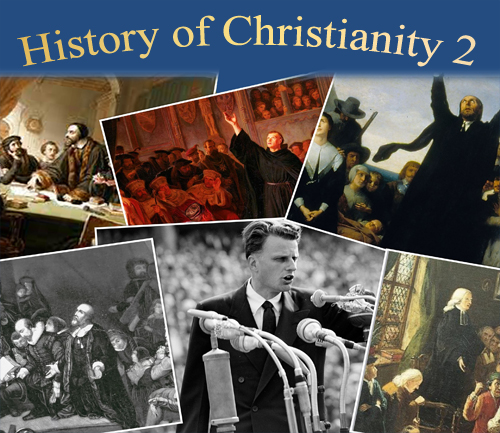Module 14: The 60s
Hi everyone, and welcome back to the fourteenth module of the History of Christianity 2 Course. In this section, we'll return to looking at the continuing church in the west. We'll resume examining the detrimental effects of the alternate worldviews that compete with Christianity for societal influence. This module will cover the worldviews and influences that culminated in the massive societal changes that happened as a result of those worldviews in the 1960s. This module will cover those worldviews, the changes they caused, the consequences in various parts of society, and the response God's church made to those changes and consequences.
This module will help you to understand the society we live in by understanding some major influences on current society which came to a climax in the 60s, and the results that came out of those influences. The student will be exposed to the underlying worldviews and how they exercised influence as expressed in the social changes of the 60s and how they changed much of western society. The student will be able to consider the result of these alternate worldviews, including contrast with the influence of Christianity.
The student will be exposed to different worldviews and their results in various aspects of society, and have opportunity to evaluate these various principles, approaches, ideas, mindsets, and practice, and the lessons that can be learned from them. This module will also aid the student to work through how the lessons learned are applicable in their own life and ministry.
Introductory Scenario
Imagine that a strange man offers you a magic
potion he promises will make you feel good. You remember your parents warned you against taking strange potions from strange men. But all your peers say the potion makes them feel great. And you have recognized that your parents are not as cool
as you once thought they were. How can you decide what to do? Will you trust the voices of tradition or the voices calling for cool
new ways? How will you decide? What standards can you use to decide? How can you weigh the short-term results against the long-term results? Please consider these questions and be watching for material that will help you answer them as you work through this module.
Module Objectives and Outcomes
Upon successful completion of this module, the student will:
- Understand the alternate worldviews that caused the social changes that happened in the 60s.
- Understand the history of the 60s and the variety of social changes that happened and the various consequences in society and in the church.
- Describe the responses the church made to the changes of the 60s, including the influential leaders and ministries, and their results.
- Evaluate the alternate worldviews prevalent in the 60s, their consequences, and the church's response, and the lessons that can be learned from the various approaches.
- Place the major events and people of these movements in a general chronology.
Instruction Guides
In this section, you'll find links to important instructional documents for this module. Click the following links to open each document. There is a set of instructions for individual study and a document for group study.
Lecture Content
In this section, you will find the video lectures for the 60s module. They are designed to be watched in order, but each video should make sense on its own. Click each banner to open access to each video. There are also links with each video if you prefer to watch on the Rumble or YouTube interface or download just the audio to listen offline.
If I were the devil
Christian Manifesto










































